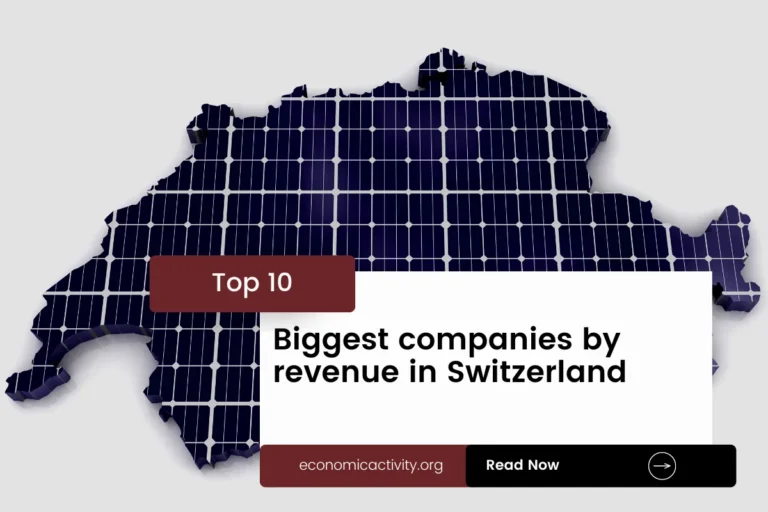Papua New Guinea, with a population of 10,142,619, is ranked 89th in the world, just behind Portugal. Located in Oceania, it covers a total area of 462,840 square kilometers, ranking 55th globally, just below Cameroon.
Papua New Guinea’s economic position in 2022 shows a GDP of $31,603,619,041.79, ranking it at 102 globally. It falls behind Honduras, which has a GDP of $31,717,699,764.36. In terms of GDP per capita, Papua New Guinea has $3,115.92, placing it at 134 worldwide.
It lags behind Djibouti, with a GDP per capita of $3,136.11. Despite facing challenges, Papua New Guinea continues to strive for economic growth and development in the global market.
What are the economic activities of Papua New Guinea?
- Primary activities: 22.1% of GDP.
- Secondary activities: 42.9% of GDP.
- Tertiary activities: 35% of GDP.

Primary Sector of Papua New Guinea
Papua New Guinea’s primary sector, particularly its agricultural activities, thrives due to its diverse climate and abundant natural resources. With 3.18% of the land dedicated to agriculture, the country produces a variety of crops and animal products, including oil palm fruit, coconuts, bananas, fruits, sweet potatoes, game meat, yams, root vegetables, sugarcane, and vegetables.
Despite contributing 22.1% to the GDP, agriculture plays a crucial role in the economy by providing sustenance, employment, and export opportunities. The sector’s significance lies in the variety of products it offers, showcasing the country’s agricultural richness and potential for growth.
The primary sector of Papua New Guinea thrives due to its rich geological diversity, providing abundant natural resources. Gold, copper, silver, natural gas, timber, oil, and fisheries play a crucial role in the economy, contributing significantly to its growth and development.
Papua New Guinea’s oil economic activity is a key player in the country’s economy, with a daily production of around 37,233 barrels. Ranking 38th in the world for oil production, the country holds significant oil reserves, contributing to its overall economic growth and development.
Papua New Guinea’s natural gas production in 2020 reached 9.8 billion m³, securing its position as the 44th largest producer globally. This thriving gas economic activity further enhances the country’s economic growth and development, diversifying its resource portfolio and attracting investment opportunities.
Secondary Sector of Papua New Guinea
What is the secondary sector or what are secondary activities?
The secondary sector comprises industries that produce finished goods from raw materials. In Papua New Guinea, main industrial products include oil and gas, gold, copper, nickel, palm oil, plywood, copra, construction materials, livestock, dairy, and various spice products like turmeric, vanilla, ginger, and chili.
In 2023, Papua New Guinea’s total exports are mainly comprised of natural resources such as minerals, timber, and agricultural products. Manufactures play a minor role, reflecting the country’s reliance on raw material exports.
Tertiary sector of Papua New Guinea
What is the tertiary sector or what are tertiary activities?
The tertiary sector in Papua New Guinea encompasses services where individuals provide knowledge and time to enhance productivity and meet needs. Main activities include healthcare, education, banking, communication, tourism, transportation, and security services. These sectors play a vital role in the country’s economic development and well-being.
Notably, Tourism plays a vital role in Papua New Guinea’s economy, contributing significantly to its GDP. With 211,000 annual arrivals, the industry generates substantial revenue. Popular destinations like the Kokoda Trail and the stunning beaches of the Trobriand Islands attract visitors worldwide, showcasing the country’s rich cultural heritage and natural beauty. Despite having a relatively low tourist-to-population ratio of 0.0208, the sector holds immense potential for further growth.
Another example of tertiary economic activity is the mobile cellular sector, with approximately 4.8 million subscriptions, supporting technological growth. This connectivity fosters innovation and enhances access to digital services, driving economic development.
Military Activities and Economic Sectors of Papua New Guinea
The military is a clear example of many economic activities working together. In Papua New Guinea, the primary sector helps by providing resources needed for military use. The secondary sector is important too, as it involves making military equipment. The tertiary sector includes services the military provides, while the quaternary sector focuses on research and development. Lastly, the quinary sector deals with high-level decisions and strategy in the military.
In 2023, Papua New Guinea’s military expenditure was 97 million US dollars, which is 0.33% of the country’s GDP. The active military force consists of 3,600 personnel. This means there are about 0.5 active military members for every 1,000 people in the country.
Biggest company in Papua New Guinea
Which is the biggest company in Papua New Guinea? SM Investments is the largest, with a market value of 20.01 billion USD. It operates in the retail industry, part of the tertiary economic sector. The company was founded in 1958 and continues to thrive in the region.
International Trade of Papua New Guinea
Import Activities of Papua New Guinea

Papua New Guinea’s high import activities, totaling $5.48 billion in 2023, account for 17.34% of its GDP, showcasing its significant reliance on foreign goods.
Papua New Guinea’s major import partners include China (26%), Australia (23%), Singapore (16%), Malaysia (9%), and Indonesia (4%). The country imports refined petroleum, rice, plastic products, excavation machinery, and trucks.
Exports Activities of Papua New Guinea

Papua New Guinea’s total exports in 2023 amounted to $15.4 billion, with exports accounting for 48.73% of its GDP. This high percentage underscores the crucial importance of export activities to the country’s economy.
Papua New Guinea’s export activities primarily focus on natural resources such as natural gas, gold, palm oil, crude petroleum, and copper ore. The country’s main export partners are Japan, China, Australia, South Korea, and Taiwan, with Japan and China being the top two partners accounting for 26% and 22% of exports, respectively.
Papua New Guinea economy challenges in 2024
Papua New Guinea faces challenges in 2024 with a slow post-pandemic recovery, an increasingly impoverished citizenry, and sustainable inflation. The lower middle-income Pacific island economy relies on natural resources but struggles with economic disparities and social issues.




Leave a Reply